Coronavirus (NOT COVID-19) – What can you do? Part 4 (Other Botanicals)

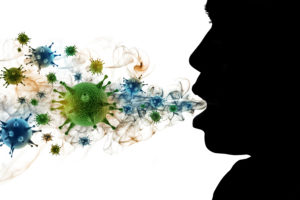
What about other botanical medicines?
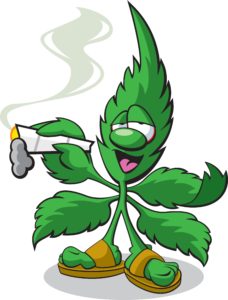
Sorry, not this kind!
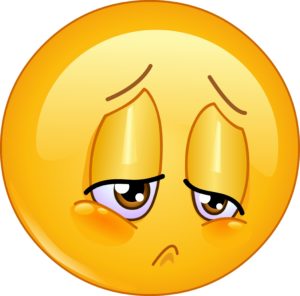
Why is it IMPERATIVE for us to have evidence-based botanical medicines to address the COVID-19 pandemic?
Again, perspective is imperative!
- The Spanish Flu in 1918 was ~.1% - .2% lethal. Estimates are between 50 million to 100 million deaths. Around 1/3 of the planet's human population became infected.
- SARS coronavirus was ~10% lethal.
- MERS coronavirus was greater than 30% lethal.
It is difficult to know the lethality of COVID-19 as this remains a constantly moving target.
So far, the death rate of COVID-19 is ~21.9% of those over 80 and 8.0% in those between 70-79 years old. It goes down from there but it does not, even in the young, dip below .2%. Interestingly, there have been no fatalities in those younger than 9 years old.
Among the confirmed cases the death rate of those with another health condition is as follows:
- Cardiovascular disease - 13.2%
- Diabetes - 9.2%
- Chronic respiratory disease - 8.0%
- Hypertension - 8.4%
- Cancer - 7.6%
Check out the following link for more details. https://www.worldometers.info/coronavirus/coronavirus-age-sex-demographics/
The issue is how contagious COVID-19 is proving to be.
And thus the need to be proactive in our approach!
My sincere hope is that these blog posts have helped in that regard.
Now, let's discuss some other useful botanicals...
CRITICAL NOTE: COVID-19 is a novel coronavirus and seems to break all the rules so please, do not misunderstand this to be applicable to COVID-19!!
It has been demonstrated that coronavirus, which does all of its main activity inside the cell, requires certain membrane receptors in order to enter into the cell. 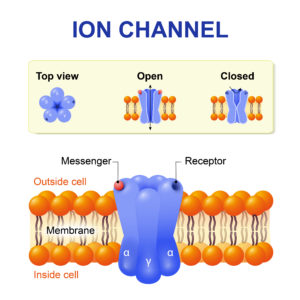 These receptors require calcium ion channels, which are referred to as TRPs.
These receptors require calcium ion channels, which are referred to as TRPs.
Nigella sativa (black cumin seeds), Anthemis hyalina (chamomile) and Citrus sinensis (citrus peeling) were evaluated for their antiviral specific activity against the TRPs.
Chamomile has been studied extensively. Twenty four different compounds have been discovered within chamomile alone.
Citrus peelings were also studied. The flavonoids discovered in the citrus peelings have been shown to have antiviral activity.
Black cumin seeds have been used historically around the world specifically in the Middle East and Turkey where it is common to mix the seeds with honey as a treatment for upper respiratory tract infections.
The purpose of this study was to evaluate the effect of chamomile, citrus peelings, and black cumin seed on coronavirus replication, specifically focusing on the TRP genes that enable the coronavirus to replicate.
The researchers applied extracts of the above botanicals to cells prior to infecting them with coronavirus.
At both 6 & 8 hours after coronavirus infection the TRP genes were down regulated, which caused a corresponding decrease in the viral load within the cells.
This is a SIGNIFICANT result indicating the ability of these botanical extracts to inhibit viral activity.
 The most dramatic effect was undetectable viral levels in the chamomile group. How exciting is that!
The most dramatic effect was undetectable viral levels in the chamomile group. How exciting is that!
Read the the full article by clicking here.
Another way coronavirus gains access to your cells is through a membrane-bound protein on the surface of the virus which attaches to a receptor on the surface of your cells - Angiotensin-Converting Enzyme 2 (ACE2). Coronavirus binds to the ACE2 receptors which both gets them into the cell and at the same time, by inhibiting ACE2 activity, causes severe lung pathology such as lethal manifestations of pneumonia.
Blocking the ACE2 receptor is a way to decrease infectability of the coronavirus.
Read the the full article by clicking here.
Emodin (antraquinone) is another very interesting botanical compound showing anti-coronavirus activity.
Emodin is an active component of Rheum officinale (Chinese rhubarb) and Polygonum multiflorum (Fo-Ti root).
A water extract of the powdered herbs was used in the experiment.
Emodin was found to inhibit the SARS coronavirus S-protein and its interaction with the host cells ACE2 receptor and was therefore an effective inhibitor of SARS coronavirus replication.
Scutellaria baicalensis (Chinese skullcap) also inhibits SARS-CoV replication both in vitro and in vivo.
It was also discovered that emodin acts on the lipid bilayer envelope surrounding the virus thus rendering it inactive.
Read the the full article by clicking here.
So, what does all this mean?
Here's a list of some of the best performing, evidence-based anti-coronavirus botanical medicines.
- Chamomile (Asteraceae family)
- Black Cumin Seed (Nigella sativa)
- Chinese Rhubarb (Rheum palmatum)
- Skullcap (Scutellaria baicalensis)
- Fo-Ti Root (Polygonum multiflorum)
- Black Cohosh (Actaea racemosa)
- Licorice (Glycyrrhiza glabra)
- Sophora flavesence
- Coptis and Phellodendron (you could also use Mahonia or Hydrastis)
- Dong Quai (Angelica sinensis)
- Elderberry fruit (Sambucus nigra)
And the following herbs have a strong antiviral effect.
- Astragalus (Astragulus membranaceous)
- Lomatium (Lomatium disssectum for its significant antiviral effects)
- Osha (Ligusticum porteri for its significant antiviral effects)
- Sweet Cicely (Osmorhiza spp.)
Wow, so many effective botanicals!!
But you're probably wondering how you might go about using these herbs?

Of course you can focus on one single plant but if you do make certain you choose one of the herbs above highlighted in yellow. Based on the research, possibly the most effective!
But wait, there is a much better approach!

The beauty of botanical medicine is that each individual herb works in synergy with the others.
Combining numerous botanicals can be more effective than working with only one single herb. Nevertheless, if you only have access to one or two of the above plants, again, make certain you focus on the ones highlighted in yellow and take them in their most potent form and at the correct dose.
Remember, plants are not drugs. Drugs are single molecules synthetically designed in a lab.
Botanicals are mixtures of many, many compounds evolved over millennia.



How to make a natural form of hand sanitizer?
- Mix 2/3 cup 99% rubbing alcohol or 190 proof Everclear (95% alcohol) with 1/3 cup aloe vera gel. Use the topical version and not the type you would take internally. The topical aloe gel mixes better and helps mitigate some of the drying from the alcohol.
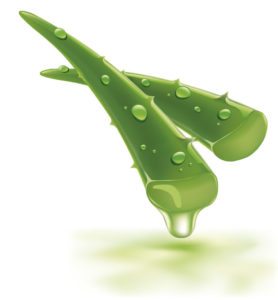
- Put this in an empty pump bottle.
- Add a few drops of eucalyptus globulus. It smells good and actually blocks coronavirus.
Other references...if you need some more reading.
Luo, W., et al., Anti-SARS coronavirus 3C-like protease effects of Rheum palmatum L. extracts. Biosci Trends, 2009. 3(4): p. 124-6.
Weng, J.R., et al., Antiviral activity of Sambucus FormosanaNakai ethanol extract and related phenolic acid constituents against human coronavirus NL63. Virus Res, 2019. 273: p. 197767.
Fiore, C., et al., Antiviral effects of Glycyrrhiza species. Phytother Res, 2008. 22(2): p. 141-8.
Huang, J., et al., Antiviral herbs--present and future. Infect Disord Drug Targets, 2014. 14(1): p. 61-73.
McCutcheon, A.R., et al., Antiviral screening of British Columbian medicinal plants. J Ethnopharmacol, 1995. 49(2): p. 101-10.
Ji, S., et al., Bioactive Constituents of Glycyrrhiza uralensis (Licorice): Discovery of the Effective Components of a Traditional Herbal Medicine. J Nat Prod, 2016. 79(2): p. 281-92.
Schmeller, T., B. Latz-Bruning, and M. Wink, Biochemical activities of berberine, palmatine and sanguinarine mediating chemical defence against microorganisms and herbivores. Phytochemistry, 1997. 44(2): p. 257-66.
Grienke, U., et al., Computer-guided approach to access the anti-influenza activity of licorice constituents. J Nat Prod, 2014. 77(3): p. 563-70.
Yu, Z., et al., Critical roles of platelets in lipopolysaccharide-induced lethality: effects of glycyrrhizin and possible strategy for acute respiratory distress syndrome. Int Immunopharmacol, 2005. 5(3): p. 571-80.
Ulasli, M., et al., The effects of Nigella sativa (Ns), Anthemis hyalina (Ah) and Citrus sinensis (Cs) extracts on the replication of coronavirus and the expression of TRP genes family. Mol Biol Rep, 2014. 41(3): p. 1703-11.
Badescu, M., et al., Effects of Sambucus nigra and Aronia melanocarpa extracts on immune system disorders within diabetes mellitus. Pharm Biol, 2015. 53(4): p. 533-9.
Nomura, T., et al., Effects of Traditional Kampo Drugs and Their Constituent Crude Drugs on Influenza Virus Replication In Vitro: Suppression of Viral Protein Synthesis by Glycyrrhizae Radix. Evid Based Complement Alternat Med, 2019. 2019: p. 3230906.
Wolkerstorfer, A., et al., Glycyrrhizin inhibits influenza A virus uptake into the cell. Antiviral Res, 2009. 83(2): p. 171-8.
Ganjhu, R.K., et al., Herbal plants and plant preparations as remedial approach for viral diseases. Virusdisease, 2015. 26(4): p. 225-36.
Jia, F., et al., Identification of palmatine as an inhibitor of West Nile virus. Arch Virol, 2010. 155(8): p. 1325-9.
Lau, K.M., et al., Immunomodulatory and anti-SARS activities of Houttuynia cordata. J Ethnopharmacol, 2008. 118(1): p. 79-85.
Yin, J., et al., In vitro and in vivo effects of Houttuynia cordata on infectious bronchitis virus. Avian Pathol, 2011. 40(5): p. 491-8.





























Would people taking ACE inhibitors be more susceptible to the respiratory effects of the virus? Would those takings ARBS be less susceptible?